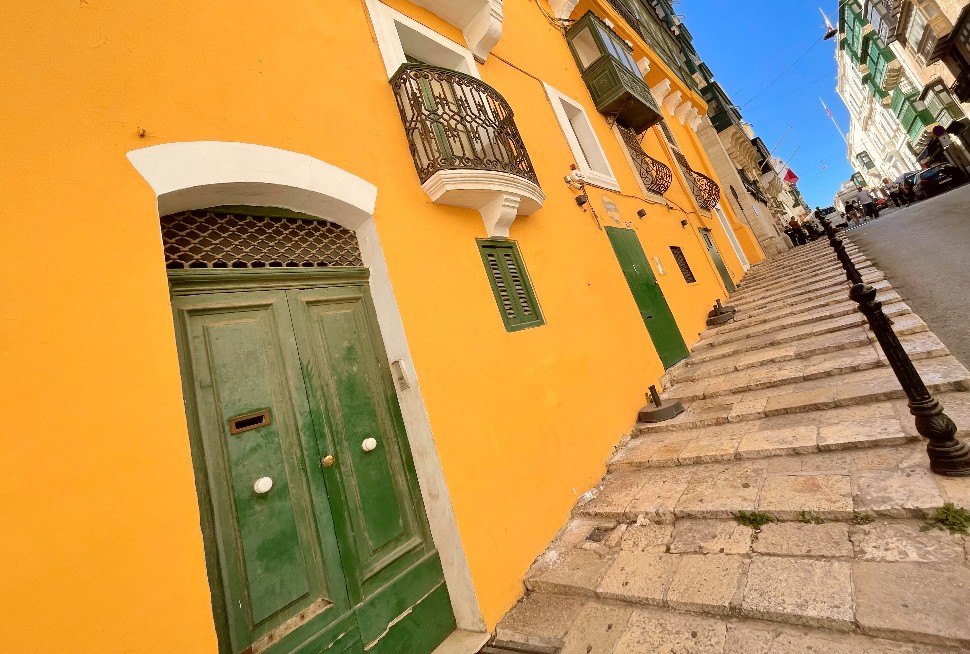
The absolute best way to explore Malta’s fortified capital, Valletta, is on foot. It’s compact and easy to navigate as most of the streets are laid out in a grid pattern. Remember, this is a purpose built city, designed and constructed by the order of the Knights Of St John. There are some hilly bits, but the tops of those provide the best views! This is our guide to some of the highlights you will see by walking around the city. Although, Valletta is packed with grand historic buildings, we actually enjoyed walking around the residential streets the best. You’ll find colourful houses and pretty passageways, and many of the buildings have the distinctive Maltese balconies surrounded by wooden enclosures. We loved the street below which is a passageway from St Christopher Street to Archbishop Street, near the Lower Barrakka Gardens. We’d recommend taking a walking tour to get the best out of your trip to the city. The Valletta 3 Hour Walking Tour regularly gets great reviews.
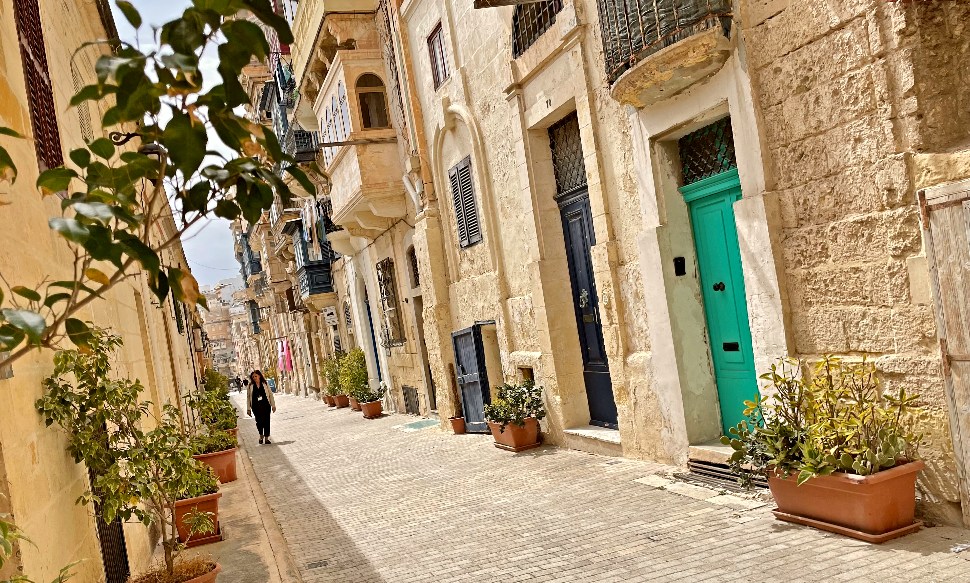
The area within the city’s huge defensive walls is a World Heritage Site. Valletta was granted with status back in 1980 and as you’re walking around you can see why. This city is stunning – like a cross between Dubrovnik and Paris. We’d recommend starting at the Main Gate and exploring the edges first. You’ll see the Upper Barrakka Gardens, the Lower Barrakka Gardens, Hastings Gardens and Fort St Elmo at the tip. There are only a handful of gateways into the city. The main gate is across a bridge from a huge plaza where the bus station is located. This is where you will find the World Heritage Site marker below.
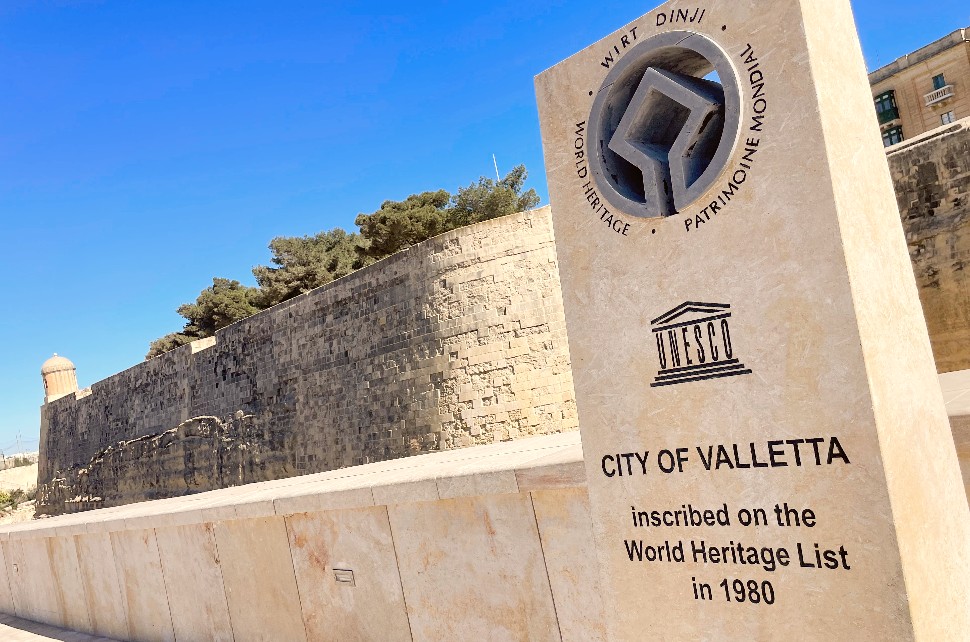
The Knights of St John created Valletta from scratch. They built all the main civic buildings you need in a city and the houses surrounded them. Most of these buildings are central collected in the same area along the main walkway through Valletta, Republic Street. Here you’ll find the Grand Master’s Palace, The Courts Of Justice, The National Library and St John’s Co-Cathedral. More recent additions along this main route include the Royal Opera House, which was destroyed in WW2. Its remains are now used again as an outdoor theatre. Up the hill from the opera house is the ‘Auberge’ building (pictured below) which is used as the office of the Prime Minister of Malta. The original auberge, built be the Knights of St John on this site, was replaced by this baroque-style building in the 1740s.
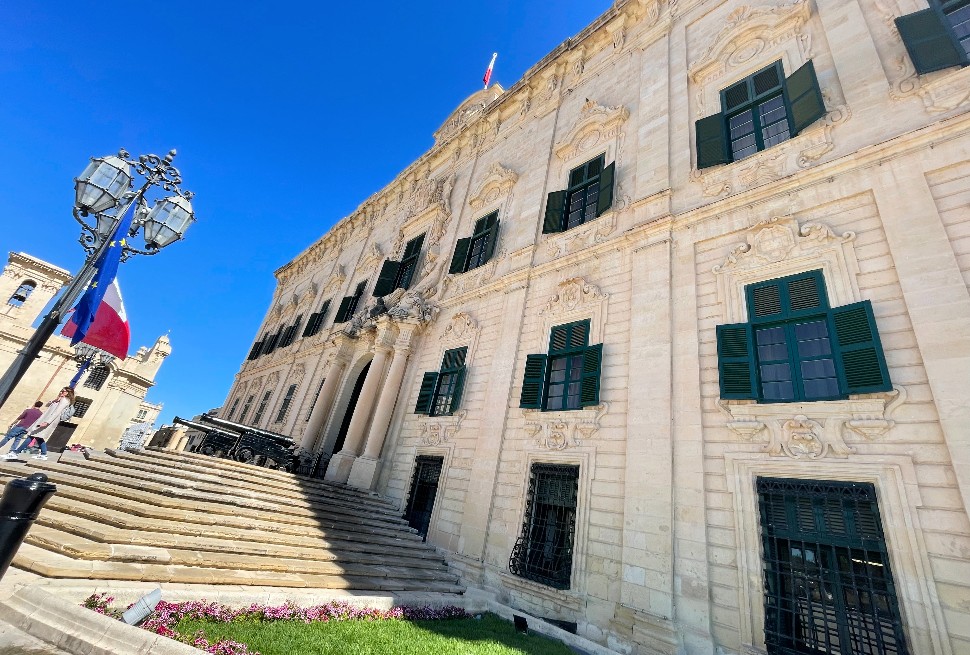
Across the walkway from the Auberge de Castille is the first building that the knights constructed when they started to build Valletta. It is therefore the oldest building in the city dating back to 1566. It’s the church of Our Lady Of Victory and it’s free to enter. When you’re inside, it has the most incredible painted ceiling (pictured below). Don’t miss the basement too.
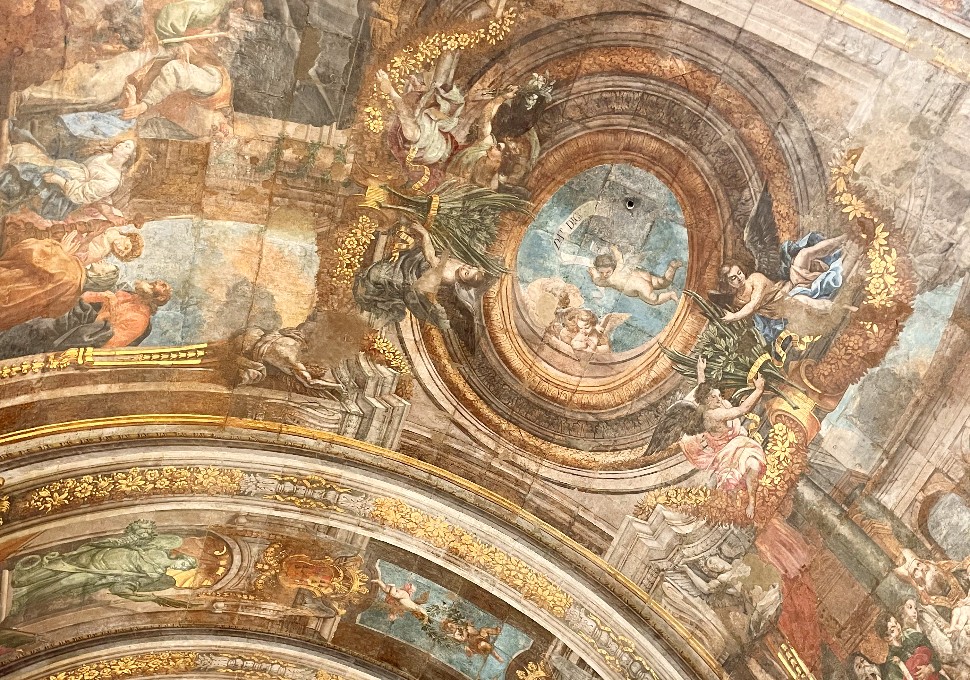
Malta has had many rulers over the years and most have left their legacy on Valletta. St Paul’s cathedral was built by the British and is still a Church of England place of worship, for example. Across from the Grand Master’s Palace is the old Guard House from the British rule of the island (pictured below). Malta has been a major movie location over the decades with its many days of sunshine each year and you may recognise the public square in front the the guard house from the Jurassic World: Dominion movie.
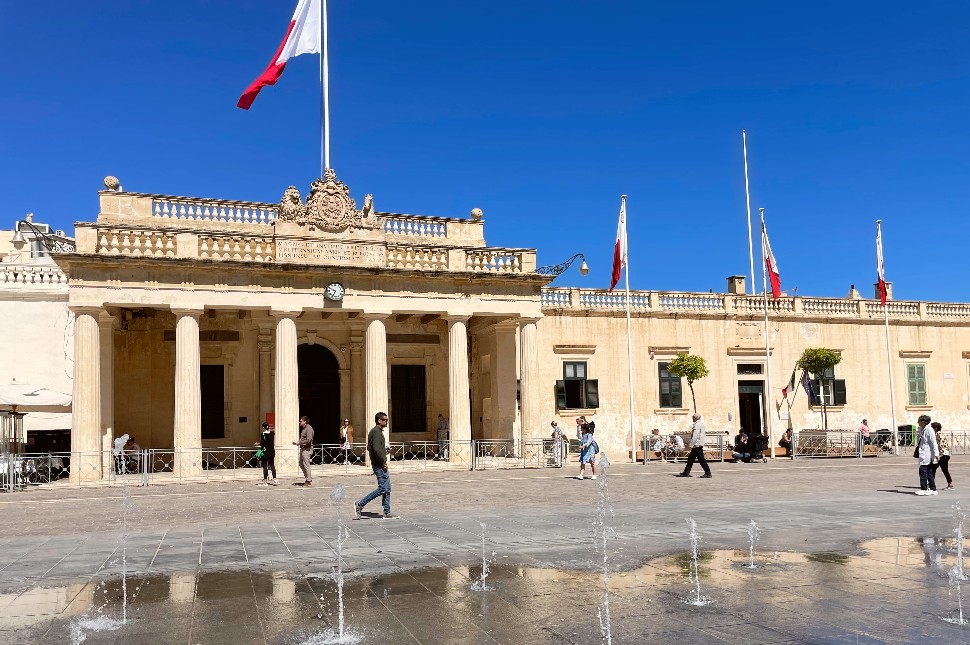
As you walk around Valletta, look out for the watchtowers dotted along the walls. There are many of them like the one below and a collection of WW2 ones also. Many are now inaccessible, but the easiest one to see is in a small car park opposite the Auberge de Castille. As you can see, it’s illuminated at night. There’s another in Hasting’s Gardens that you can quite close to when the gardens are open.
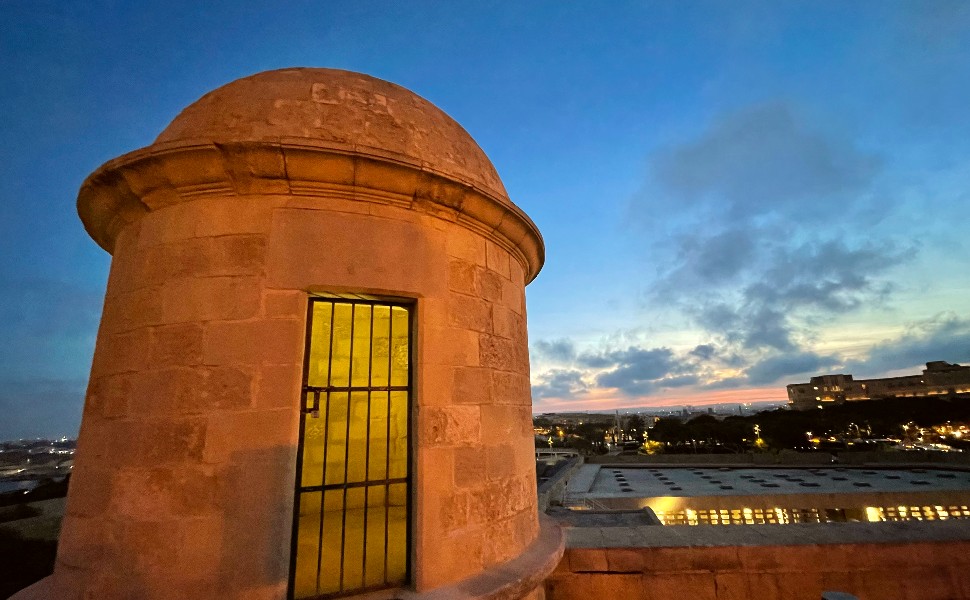
Once you’ve walked around the street level of Valletta, there is a whole subterranean part to explore too. From the bus station or from the stairs near the main gate, you can access a ‘ditch’ garden which has been created at the bottom of the ancient walls. Down here, you’ll find many caves and passageways that have been cut into the rock. The most significant passageway allows access to the Lascaris War Rooms, but you don’t have to pay just to walk though the tunnel. Although the garden has gone a bit wild these days, down here you get a completely different view of the city of Valletta. There’s some interesting history too – did you know that the bridge where the photo below was taken used to carry trains that ran between Valletta and Mdina, with some of the route underground?
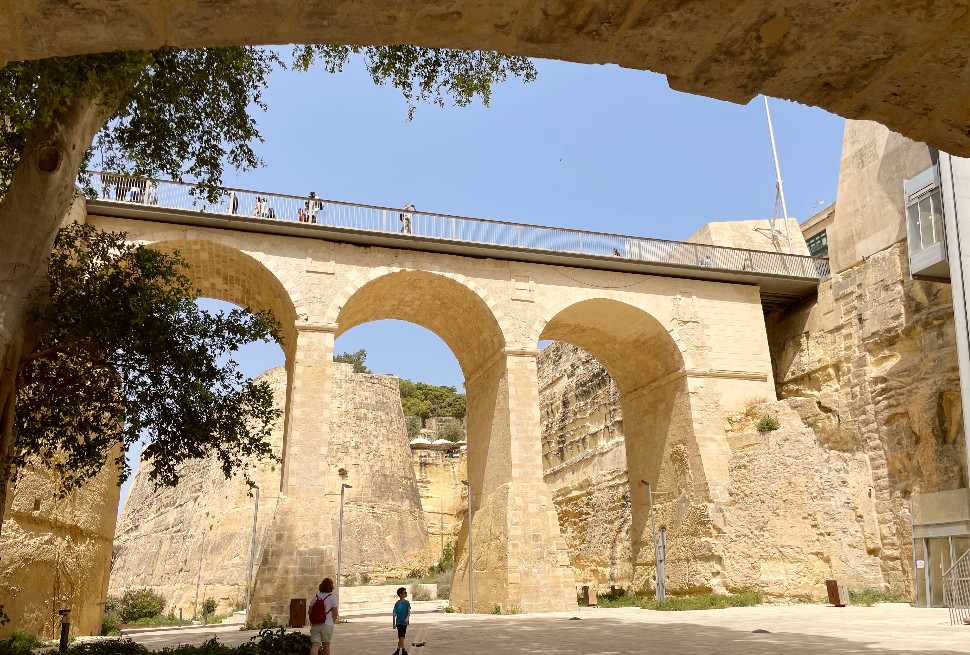
This is just a small guide to the sights you can see by walking around Valletta. Check out our full Valletta City Guide for advice on the main places to see while you’re in the city.
MORE ON THE STREETS OF VALLETTA
Hotels in Valletta – Booking.com
More Things To Do In Valletta – GetYourGuide
